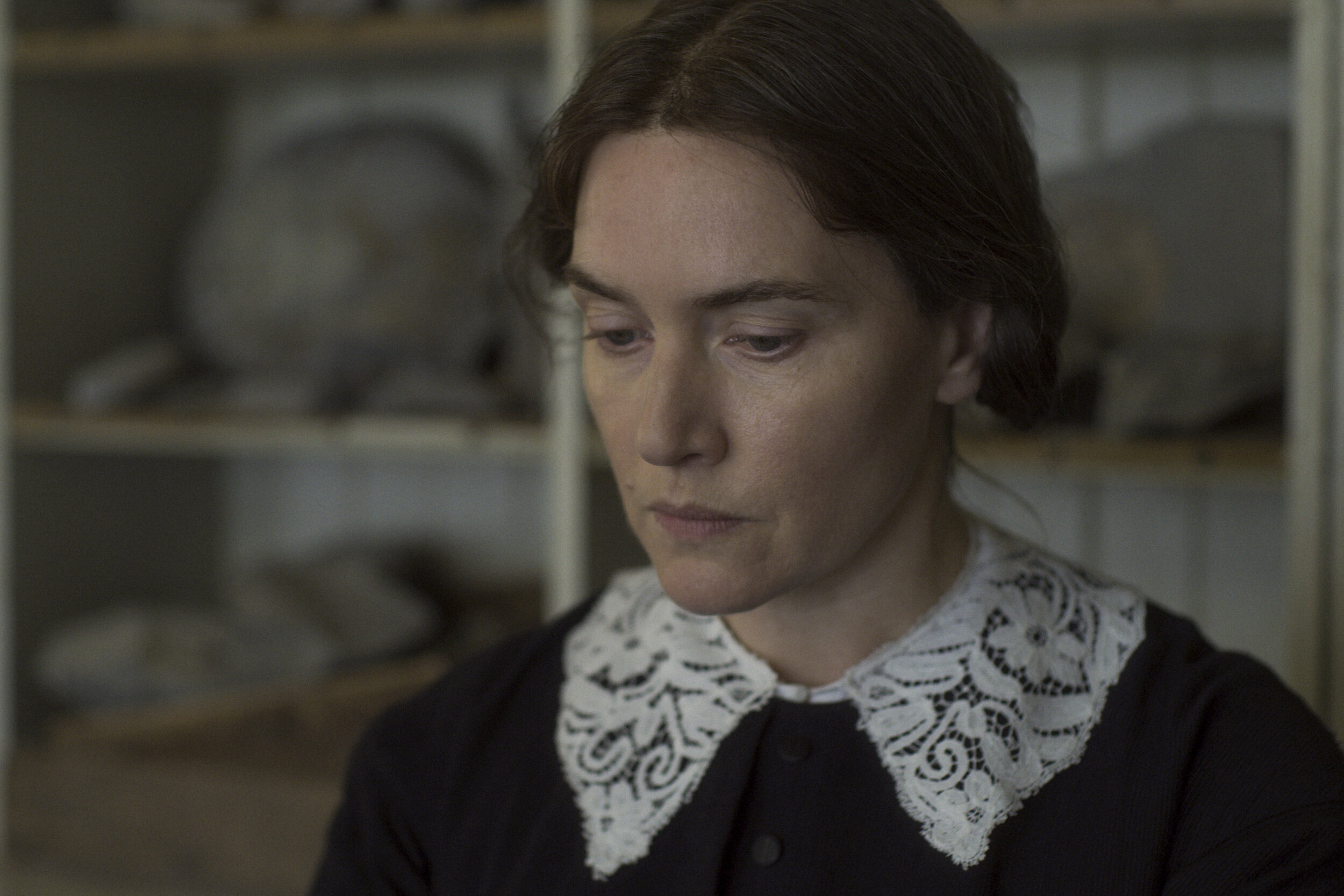Pi@LFF: Review of 'Ammonite' by Francis Lee
Featured in the BFI London Film Festival 2020, Francis Lee's “Ammonite” is a simplistic yet passionate love story of cultural and historical interest.
Source: image.net
“Ammonite” has, as its artefact, a passionate love story of cultural and historical interest. But it is also an acute reflection on the systematic exclusion of women from history through male appropriation. Director Francis Lee reimagines Mary Anning (Kate Winslet) as a proto-feminist pioneer with a queer-coded narrative, using artistic licence as a riposte to the cultural ‘straightening’ of gay history.
The film is mired in social realism, an understated exploration of the female experience in the 19th century, but Lee resists creating a sociopolitical treatise; the historical elements nourish the romance rather than dilute it. Charlotte Murchison (Saoirse Ronan) is cloistered by her husband; she is a passive, mute doll until she symbolically takes off her wedding ring with clay hands. Whereas, the tempestuous Anning is consciously masculine, hoisting up her navy skirt, a shade which contrasts the notes of femininity in Murchison’s dress, to pee. It both resists and hinges on female solidarity, for it “is a woman’s position to care for a fellow sister is it not?” At times, the romance feels maternalistic, with Anning caring for Murchison, and the intimate scenes are preluded by nose rubs, hugs and swimming lessons. The opening and closing scenes are visually evocative of the thematics of the film; the end shot is a minimalistic tableau of Anning and Murchison facing each other in symmetry, adorned with colourful bonnets against the monochrome of men in black.
Lyme Regis lends itself to film and fiction, saturated with history and sustained by its stale opulence; a long shot of the Cobb evokes Austen’s “Persuasion” and the 1981 adaptation of Fowles’ “The French Lieutenant’s Woman”. In “Ammonite”, Stéphane Fontaine’s cinematography, wild in its rustic carnality and tactile hues, functions as a double to the coarse intimacy of Anning and Murchison; he creates an erotic pastoral with a quasi-gothic tone. The intimate sound palette, as quickened breaths riff on the rushing of waves, intertwines with this nature, and is diegetic until Anning and Murchison are first alone together, where the addition of strings echoes a latent, thrumming chemistry.
Lee embeds visual metaphors - the eponymous ammonite evokes Anning’s calcified exterior and Murchison’s shell of melancholia, and the entrapped bugs are an overworked motif; he rests heavily on aestheticism to offset the eerily muted discourse and otherwise thematically stagnant period film. Yet Winslet and Ronan operate within the silence; in the suffocating close-ups, they masterfully capture internalised emotion through the nuances of body language. Winslet’s facial expressions become a kind of physical monologue, and her subtle inflections create a sensual subtext. Each glance is intensely weighted, punctuated by the spreading of lotion and the tightening of corsets: it is homoeroticism tempered by English sexual coyness. However, as the latent feelings turn to rapture, dormant longings are transmuted into explicit sequences.
“Ammonite” has parallels with other arthouse flirtations with lesbian desire, specifically Céline Sciamma’s “Portrait of a Lady on Fire”. The two share tropes: coastal settings, corseted yet unglamourised women, silences embroidered with words unsaid. However, where in “Portrait of a Lady on Fire”, Héloïse is the ember, and Marianne the beacon, the slow-burning “Ammonite” kindles the flames, but not enough to be set ablaze. Sciamma invokes fire; Lee, ice. While the silver threads which run through “Portrait” feel transcendental, “Ammonite” is more quietly radical; yet its striking simplicity is both a homage to the era and the women who inhabit it. Nevertheless, Lee is sexually frank and, unlike Sciamma, does not tactfully time shift from impassioned candlelit kisses to morning lovers entwined in sheets. Instead, he lingers graphically in intimate scenes which aren’t ritualistic or fetishised, reaching a pitch of romantic desperation which doesn’t feel pornographic.
The final scene eschews what has become the cliché, yet ever potent, ending of gay cinematic narratives: the bitter ache of a past obsession that can never, and yet will always, be. Where other closing scenes are prolonged in ambiguity, this time we see what happens when the two lovers meet again, and the discordance between the idealised love by the ocean and the harsh reality, suggesting that sometimes the open-endedness of what could have been is less painful than what is. It is, then, more mature than its precursors, and, although Mary is awakened by Charlotte, this is not a love story but something akin to a summer fling - one which will not weather the winter. Instead, it is a love letter to Mary Anning, rewriting her narrative so that it is finally heard.

